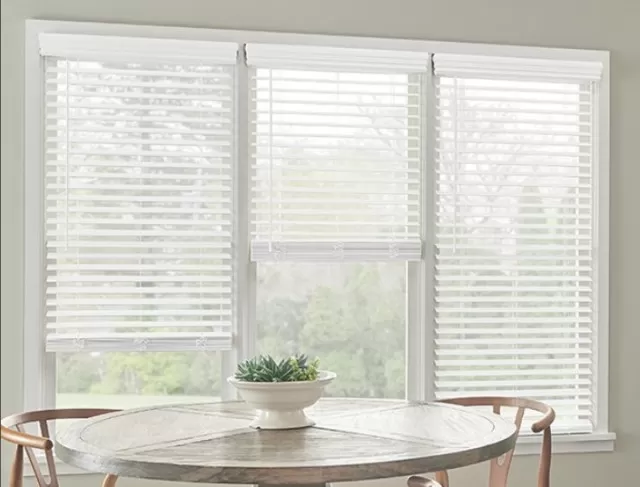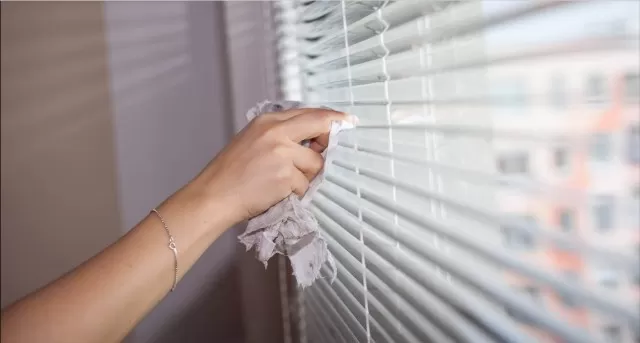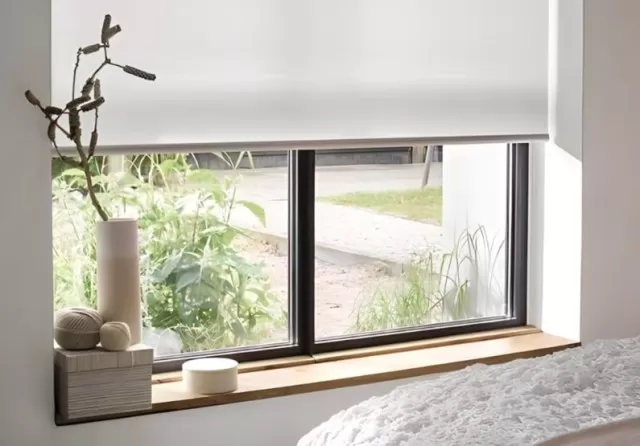Before you clean blinds to Remove Dust and Debris or blinds that are new to you, it is important to refer to the manufacturer’s instructions.

In an ideal world, the regular and thorough dusting of home surfaces would be included in our weekly cleaning routines.
However, in reality, dusting, especially in hard-to-reach or awkward places like window blinds, is a task that is often overlooked or postponed for another time. Unfortunately, dust, environmental debris, and bio-based soils such as hair and dead skin can quickly accumulate on blind slats, giving them and the entire home a dull appearance.
Before cleaning a new set of blinds or blinds that are new to you, it is important to refer to the manufacturer’s instructions.
These instructions are typically available on the brand’s website and will provide specific guidance on what cleaning methods and products should be used, as well as any precautions to be taken while cleaning the blinds.
Clean Blinds with a Duster

Materials
- Supplies for Dusting
- Microfiber cloth or duster
- All-purpose cleaner or Dish Soap (optional)
Instructions
- Routine Cleaning with a Duster:
- Weekly, use a dry microfiber cloth or duster to wipe the slats of the blinds, removing dust.
- If needed, use an all-purpose cleaner or sudsy water to clean any stuck-on dirt or grimy patches.
- Avoid using liquid cleaners until most of the dust has been removed to prevent a messy cleanup.
- Open Blinds:
- Open the blinds to thoroughly clean them. Cleaning closed blinds will only clean half of each slat.
- If your blinds have reversible slats, close them, clean one side, then reverse the slats and clean the other side.
- Dust from Top to Bottom:
- Grip both sides of a slat with a microfiber cloth and start at the top.
- Wipe each slat, working your way down.
- For horizontal or Venetian blinds, clean from left to right. For vertical blinds, clean from top to bottom.
- Shake out or replace the cloth as needed during dusting. Alternatively, use a microfiber duster with a handle or telescoping duster for convenience and hard-to-reach areas.
- Spot Clean Blinds:
- Lightly spray a section of a microfiber cloth with a gentle all-purpose cleaner or use diluted dish soap.
- Gently but firmly wipe away any stuck-on residue or dirt streaks on the blinds.
- Vacuum the Area:
- Use appropriate vacuum attachments, such as a dust brush, to vacuum the area around the blinds, including the window casings.
- This will pick up any dust that has fallen during the cleaning process.
Note: Consider using a tarp or old towels to protect the floor or furniture from any falling dust or cleaning solution while cleaning the blinds.
Clean Blinds with a Vacuum

Materials
- Vacuum
- Dust brush attachment
- All-purpose cleaner or dish soap (optional)
Instructions
- Close the Blinds:
- Start by closing the blinds. Attach a soft dusting brush to your vacuum cleaner.
- Vacuum Each Slat:
- Begin at the top of the blinds and work your way down, vacuuming each slat. Move the brush attachment slowly in a straight line along each slat.
- For better control, you can hold the bottom rail of the blinds to keep them taut while vacuuming.
- Reverse the Slats and Repeat:
- Reverse the slats to close them in the opposite direction. Use the same vacuuming technique to clean the reversed side.
- If the slats cannot be reversed while hung, you can take the blinds down and vacuum them on a flat surface. Flip them over after cleaning one side.
- Spot Clean Blinds and Vacuum the Area:
- If you encounter any stubborn residue or dirt, spot-clean the affected areas using the methods described earlier.
- After cleaning the blinds, vacuum the surrounding area, including the window casings, to collect any dust or debris that may have been dislodged during the cleaning process.
Note: Vacuuming is a convenient method for routine cleaning of blinds, but for a more thorough cleaning, combining vacuuming with other methods like dusting or spot cleaning may be necessary.
Deep Clean Blinds

Materials
- Dish soap
- Microfiber cloths
- Tarp or old towels (optional)
Instructions
Cleaning blinds that are very dirty or heavily stained can be done through a deep cleaning process in the bathtub.
However, it is crucial to refer to the manufacturer’s instructions before proceeding, as submerging certain types of blinds in water may cause permanent damage, such as rust. Note that this method is not suitable for cellular or natural wood blinds, as water immersion can lead to damage.
- Fill the Bathtub: Fill the bathtub with warm water and add a few drops of dish soap.
Use your hands to agitate the water and ensure the soap is fully dissolved. If you’re concerned about scratching the tub, you can line it with a sturdy tarp or old towels as a protective barrier. - Remove and Open the Blinds: Take down the blinds from the window and fully open them, extending them as much as possible.
- Submerge the Blinds: Place the blinds in the bathtub, ensuring that the slats are fully submerged.
Allow them to soak for approximately 10 minutes. To secure the blinds in place, you can drape the top rail over the side of the tub. - Wipe the Slats: After the soaking period, use a microfiber cloth to wipe each slat, removing dirt and grime.
- Rinse the Blinds: Drain the bathtub and rinse the blinds thoroughly with Clean Water.
- Dry and Rehang the Blinds: Using a clean microfiber cloth, dry the blinds thoroughly before rehanging them in the window.
Ensure they are completely dry to prevent any water damage or moisture-related issues.
*The information is for reference only.